Peter W.U. Appela and Kim H. Esbensenb
aSenior research scientist, www.Appelglobal.org. E-mail: [email protected]
bConsultant, independent researcher, Dr (h.c.), www.kheconsult.com. E-mail: [email protected]
Introduction
Mercury pollution is rapidly becoming a very serious problem for life on Planet Earth.1 Through organisations such as the United Nations Environment Programme (UNEP), the World community has become acutely aware of the dramatic increase of global mercury pollution. The treaty designed to protect human health and nature, the “Minamata Convention”, has been signed by the majority of world countries. Signatory countries are obliged to start initiatives to reduce and, preferably, even stop mercury use. Small-scale gold mining accounts for 37 % of global mercury pollution. Millions of poor people have to resort to this type of mining as the only way of sustaining their families.2 A large part of the mercury used in the final step of gold extraction ends up as mm-sized droplets in dumps (tailings) from which mercury slowly evaporates to the atmosphere. These droplets make up what is referred to as “mercury flour”, which is a major contributor to global mercury pollution. The flour also contains large amounts of gold—and herein lies an opportunity. This article describes a road map to clean up mercury from tailings with both environmental and economic benefits. The gold in the mercury flour, when recovered, will cover most, if not all of the cleaning-up costs and may even provide a handsome profit. Possible ways of safe long-time storage of the recovered mercury are also outlined.
Small-scale gold mining
Global mercury pollution affects millions of poor people in Southeast Asia, Africa, Central and South America who, in order to provide a livelihood, resort to gold mining using primitive equipment and low-tech approaches. The final step in the gold extraction process relies on mercury to capture the numerous small gold grains in pulverised hard rock or river sediments. Carried out for hundreds of years, this type of local gold mining has in the past caused only relatively minor mercury pollution, and usually only local. However, the dramatic population increase during the last century has caused a massive increase of this pollution. While we cannot easily provide immediate alternative sources of income for millions of small-scale gold miners, we can influence the prevalent way of thinking about how to extract gold in an equally efficient, mercury-free approach and, furthermore, simultaneously be able to show an avenue to clean up the hundreds of thousands of heavily polluted mining dumps that litter Planet Earth.
Gold occurs in mineralised hard rock as µm- to mm-sized grains, either as pure grains, but more often enclosed in other minerals, and as free gold in river sediments. Small-scale gold mining is carried out from pits, shafts or tunnels. The ore is crushed and further milled down to mm-sized powder in order to liberate the gold grains from their host minerals. The next step is to concentrate the heavy minerals, among these, gold. The gravitational methods used vary greatly from simple to complex. The former, such as panning, are the most common, but more complex methods generally result in higher yields. The outcome is a mineral concentrate comprising a variety of heavy minerals including gold. The next step is to separate gold from the other heavy minerals. This is more often than not done by adding mercury to the concentrate (Figure 1). Mercury has the capacity to amalgamate elements such as gold, silver and copper into an alloy. The key next step is to burn off the amalgam so that mercury evaporates and gold is left behind (Figure 2). This simple process does not require much investment in equipment, but is extremely toxic. The waste tailings are simply dumped. This procedure is used by millions of artisanal miners.
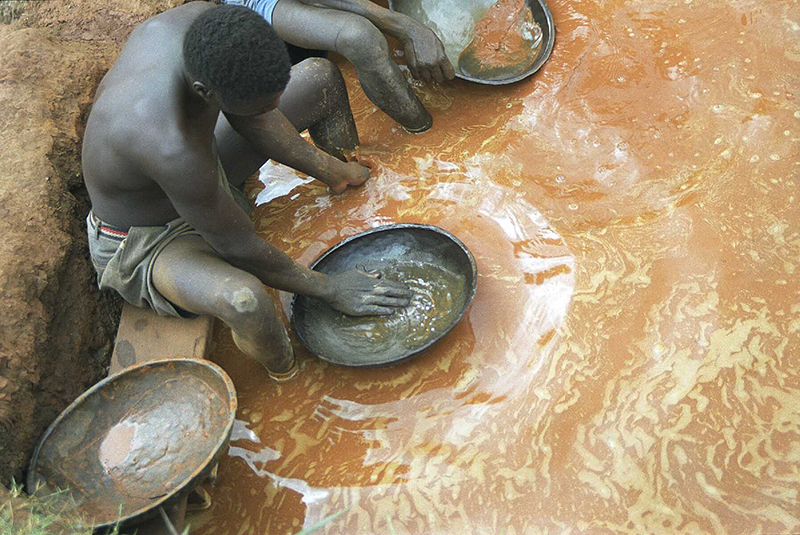
Figure 1. Hand-mixing mercury with milled gold ore (Tanzania). Reproduced from Reference 7 with permission.
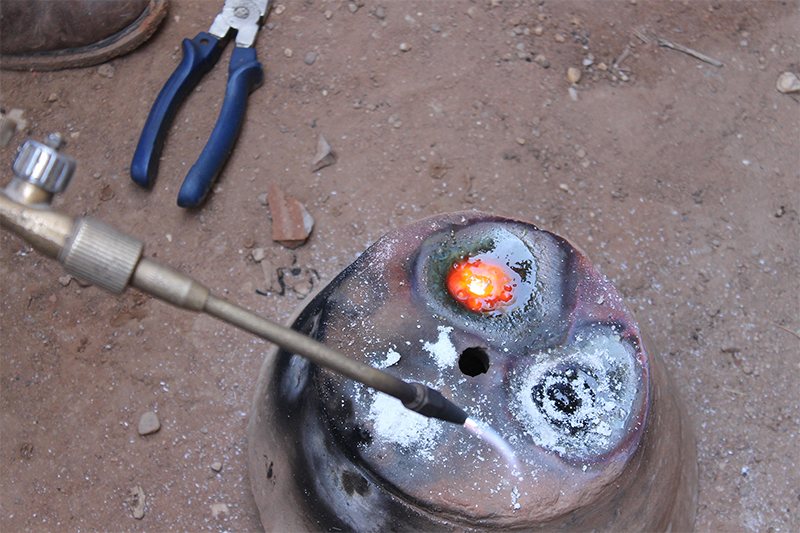
Figure 2. Gold has been concentrated and smelted to a small bead. Reproduced from Reference 7 with permission.
Besides the very serious atmospheric mercury pollution, from the point of view of the extraction technology itself, there is also a serious disadvantage in the form of the mercury flour, a product of the mixing.
Mercury flour
During milling and hand mixing, part of the mercury is transformed into mm-sized droplets referred to as “mercury flour” (Figure 3). This can float on water because the individual droplets are very small. Many of the droplets may float close together but they never coalesce, neither do they coalesce when dispersed in milled gold ore. Mercury flour disperses into the environment and so is lost to the miners. The remaining flour is scattered in the tailings and is, likewise, unattainable to the miners.
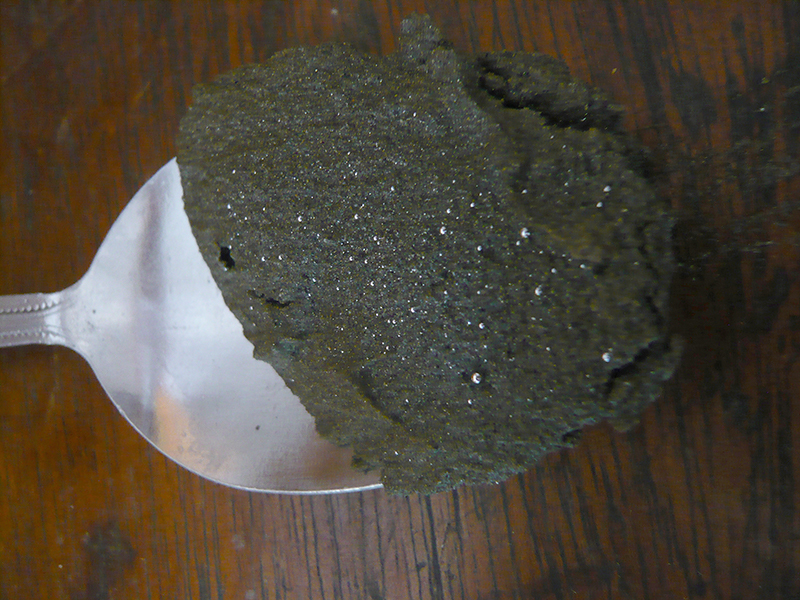
Figure 3. Mercury flour (droplets) in a spoonful of tailings (Philippines). Reproduced from Reference 7 with permission.
Mercury flour is one of the main contributors to a rapid growing global mercury pollution crisis. It constitutes one of the most severe threats to the environment and to the health of us all on Planet Earth. Mercury flour in the tailings gradually evaporates. Through wind, the vapour is actually incrementally spread all over Planet Earth. Rain brings the atmospheric mercury to the surface of the Earth where it enters the drainage system. In the rivers and in the soil metallic mercury is changed into methylated mercury, which enters the food chain. The mercury is thus not only a health risk in the countries where it originates, but it very quickly creates a global problem.
Mercury flour also contains large amounts of gold, which, if realised, has such a high value that this could provide quite a substantial lift to the miners’ livelihood. Reaping this gold amounts to a win–win achievement, but the awareness of this option is not widely known.
Capturing mercury flour
At first sight, it would seem an insurmountable task to recover the immense number of very fine droplets scattered throughout all the innumerable local artisanal tailings from small-scale gold mining, on several continents. There is a way, however …. The first attempt at this was carried out in 1894 by the Australian Government during the major gold rush in Western Australia.3 The Australians termed the new facilities “State Batteries”, but they apparently soon went out of use. The next attempt was in 2011 where a research group supported by the Benguet Federation of small-scale miners in the Philippines, the Sumitomo Foundation (Japan) and the Geological Survey of Denmark and Greenland (Denmark) improved the working processes inherent in the State Batteries.4 The resultant facility is now known under the name “Peter Plates”, a name coined by the Benguet Federation of small-scale gold miners.
“Peter Plates”
“Peter Plates” consist of a number of copper plates stacked at an inclined angle, one plate on top of the next in a continuous flow train (Figure 4). Before use, the plates are thoroughly cleaned with nitric acid, after which they are treated with metallic mercury, which forms a thin coating of copper amalgam. Tailings with mercury flour are slowly flushed down the plates. On contact with the copper amalgam, the flour sticks to the plate and is so captured. If the first plate does not retain all droplets, subsequent plates come into play in a classic cascade process. When the plates are at capacity, the amalgam is scraped off and the process can easily be repeated.
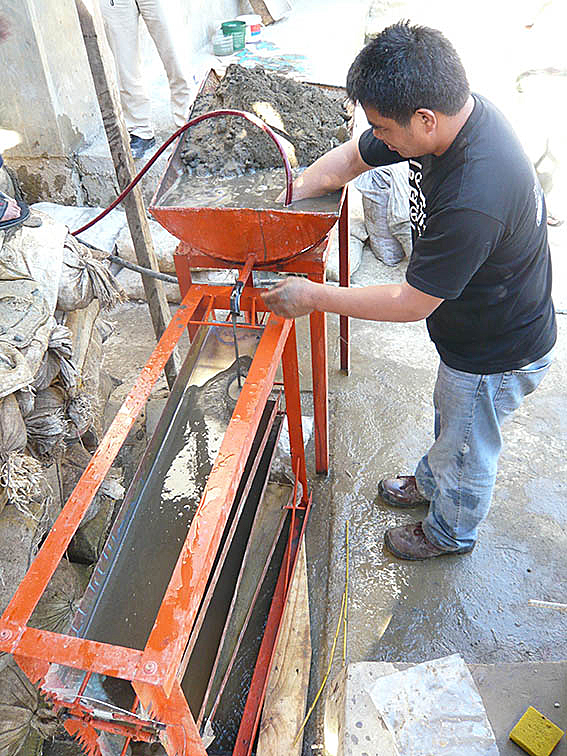
Figure 4. Prototype of “Peter Plates” in action (Philippines). Tailing slurry from the tub is passed over the plates in succession. Reproduced from Reference 7 with permission.
After processing, the amalgam is heated and the vapour captured in a cold trap. Testing carried out in the Philippines in 2010 and 2011 proved that this method can extract up to 60 % mercury from tailings.4 Although this is promising by itself, reflecting a capacity of about 100 kg tailings processed per hour, when considering the millions of tons of polluted dumps that today wait to be cleaned, a long-term viable solution still would appear far away.
Thus, the efficiency of “Peter Plates” to capture mercury is promising, but their capacity is currently not at a level to make a significant quantitative contribution to the clean-up that is needed in order to reduce the many tons of tailings in existence already.
In 2013, the Californian company Oro Industries invented a Mercury Recovery Plant (MRP; Figure 5). It is a large mobile machine on wheels, towable by truck and thus suitable for reaching tailing dumps spread across large geographical areas. It processes heavy mineral concentrates through a series of cyclones with the concentrate from each cyclone directed on to the next. The concentrates from the two first cyclones are directed into a centrifuge, and the concentrate here from is finally directed into the last cyclone. One MRP unit has a capacity of 15–20 tons per hour. Based on this, each plant produces a concentrate in the order of 10–20 kg heavy minerals per hour, including mercury and gold. The combination of MRP and Peter Plates increases efficiency significantly; the latter hooked on the MRP outlet extracts mercury flour and gold from the heavy mineral concentrate as shown in Figure 6.
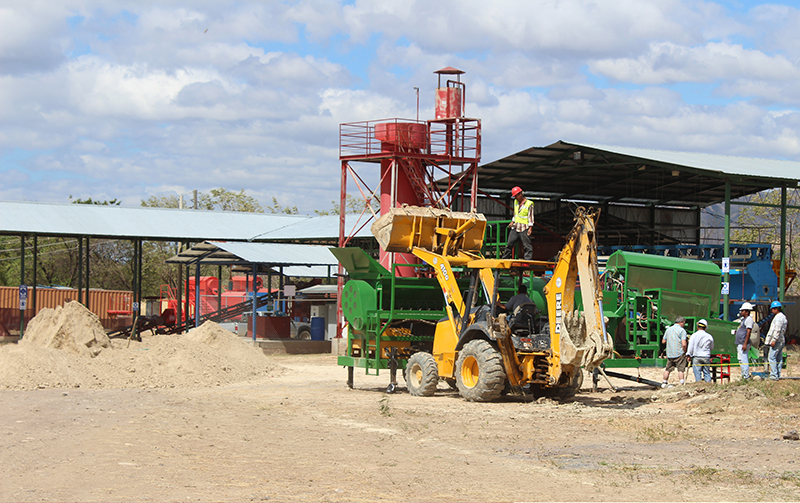
Figure 5. Mercury Recovery Plant (MRP) being loaded with tailings (Nicaragua). Reproduced from Reference 7 with permission.
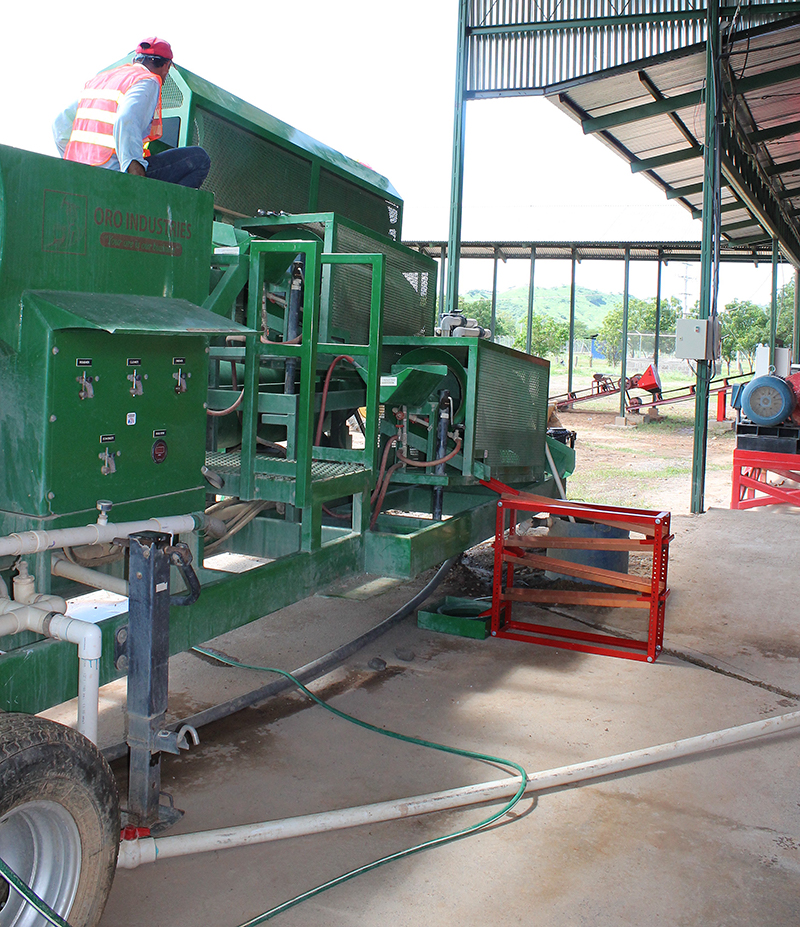
Figure 6. Mercury Recovery Plant (MRP) hooked up with Peter Plates (Nicaragua). Reproduced from Reference 7 with permission.
The capacity of the combined MRP and Peter Plates can extract auriferous mercury from 20 tons per hour, 24/7.5 A rough estimate of the total tonnage of current tailings produced per day will require in the order of 5000 processing plants to travel Africa, South and Central America and Southeast Asia to just to keep up with the daily production! It will thus require many more processing stations if the target is to clean the tailings produced previously. However, the thrust of the present communication is that the necessary dual-purpose technology is now at hand, and that the clean-up rate can in fact be tackled—technologically it is simply a matter of scaling-by-numbers of the combined MRP–Peter Plates units.
Sampling—a critical success factor
In order to benchmark the combined MRP–Peter Plates process, it is essential to get a reliable assessment of the overall mercury and gold content before processing. The specific sampling issues involved are far from standard. How does one obtain a reliable figure for mercury and gold content in a typical, say, 10-ton tailings stock, in which both elements are very irregularly distributed? In fact, the average tailing concentration is at the ultimate low end of trace levels for both elements. Due to the resulting extreme heterogeneity, there are fewer more challenging sampling scenarios, when almost all levels of sampling technology and equipment are absent. “Barefoot sampling” was what was needed,6 but with the exact same stringent objective—obtaining a reliable estimate of the concentration levels.
Under such difficult field conditions, the best way to achieve this sampling goal is by so-called incremental composite sampling, a technique developed at research institutes and private companies over many years. The specific approach used during the phases of this project was stringently crafted to comply 100 % with the demands of the Theory of Sampling (TOS). In initial tests, the critical primary sampling procedure comprised ~2000 increments (each ~100 g) from each test tailing (ranging from 4 ton to 21 ton in weight), which, when aggregated, resulted in primary composite samples of the order of 200 kg (Figures 7 and 8). After these documented representative samples were collected, they were subsequently further mass-reduced both in the field (Nicaragua) as well as in the laboratory (GEUS, Denmark), in order to arrive at reasonably sized aliquots for analysis for mercury and gold, which was subsequently carried out in a commercial laboratory. The full “from-lot-to-aliquot” sampling pathway is described in full detail by Esbensen and Appel.6
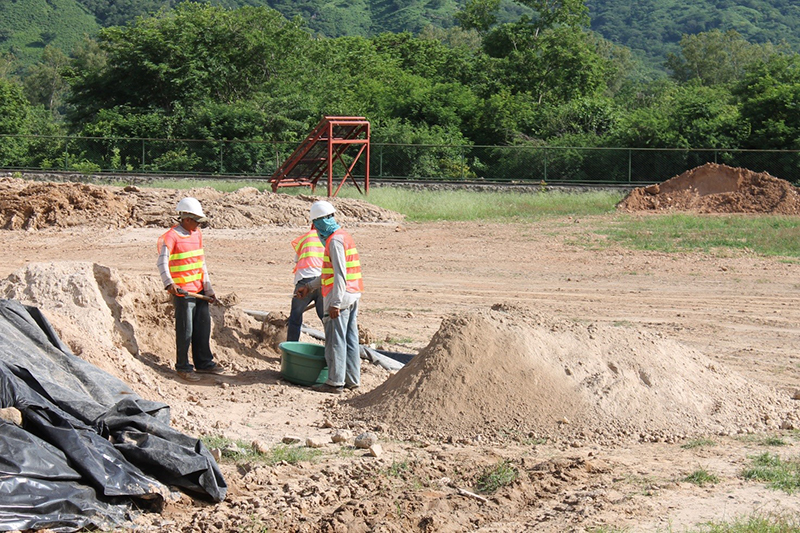
Figure 7. Halfway through the intensive task of moving a complete original lot one shovel at the time, taking great care to extract an increment from each, as detailed in Figure 8. Reproduced from Reference 6 with permission.
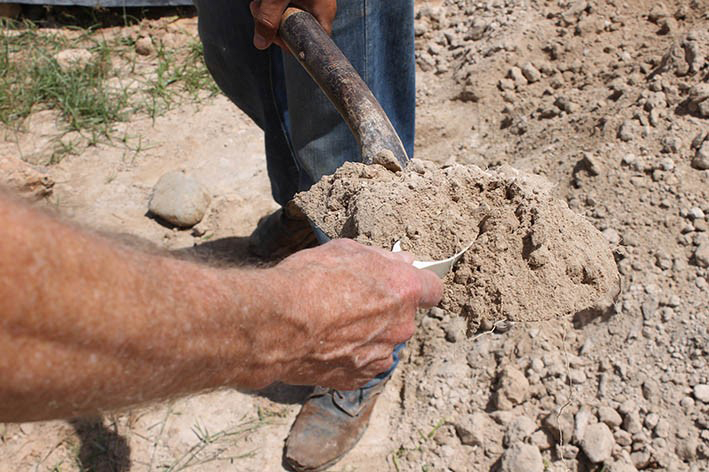
Figure 8. Incremental composite sampling from each shovel used to transport the original lot, see Figure 7. Reproduced from Reference 6 with permission.
Fate of recovered mercury
When the combined MRP–Peter Plates system goes into production across three continents, the amount of mercury recovered will reach many tons per year. This raises the important question about the destiny of this mercury. Fortunately, there are several research groups currently working on this problem, which is not only relevant to gold mine tailings but also to cleaning up other sites with large mercury spills. Two of these are:
- Nomura Kohsan Co. of Japan (www.nkcl.jp) which has constructed a solidification system which provides safe, long-term storage of mercury. The company has expressed interest in constructing a portable processing plant that can follow the MRP–Peter Plates activities.
- Batrec Group in Switzerland (www.batrec.ch) has to date solidified more than 600 tons of metallic mercury into the naturally occurring cinnabar (HgS). The cinnabar is stored in German salt mines.
Conclusions
Initial studies have shown that the combination of MRP–Peter Plates is able to recover substantial amounts of mercury from the numerous tailings from small-scale gold mining that litter Southeast Asia, Africa, Central and South America. It is clear that local adjustments will be needed in order to be able to characterise local tailing compositions more comprehensibly to be able to compensate for differences in mineral composition of the tailings from one area to the next, especially regarding the degree of liberation of the most prominent amounts of gold. It would be highly advantageous to be able to use fast “barefoot” mineralogical assessment methods to assess gold particle liberation, i.e. allowing artisanal miners definite information as to whether the tailing gold has been sufficiently crushed to allow complete liberation. While the gold liberation issue has been the target of an enormous R&D effort in the gold mining industry for numerous decades, an easy approach has not yet emerged. Should not the gold mining industry be able to divert just a minute fraction of its revenues to this low-tech challenge, and thereby help millions of starkly impoverished artisanal mining communities in addition to contributing towards the Minamata convention goals? It will also likely be important to observe and compensate appropriately for the characteristics of local climatic conditions regarding whether the climate is humid or dry.
The major remaining scientific and technological question concerns why some tailings are more amenable to mercury extraction than others? First generation mineralogical investigations have not provided a clear answer,4 but to date it has not yet been possible to carry out more comprehensive studies due to lack of appropriate funding. The specific comminution/crushing/milling approach further developed, and attendant problem-dependent processing times, will likely also play an important role in increasing the degree of recovery. However, today we finally have complete knowledge on how to design, plan and implement the sufficient-and-necessary feasibility study that will put produce numerical answers to all queries described above. The world cannot wait any longer…
Acknowledgements
The first author is grateful for economic support from the Danish Ministry of Environment and Food. The initial steps in the 2011 testing of “Peter Plates” were undertaken during employment at the Geological Survey of Denmark and Greenland, with support from the Benguet Federation of Small-scale gold miners, Philippines and the Sumitomo Foundation, Japan. A major part of the work was carried out with Elplatek A/S, the Department of Metallurgy, Danish Technical University and the Geological Institute, University of Copenhagen. Oro Industries, California, participated in all testing of the MRP. Encinal, a Nicaraguan company (www.recursos-encinal.com) graciously allowed two visits to their Northern Nicaragua site where an MRP was located, while another a Nicaraguan company, Ensome (www.ensomeinfo.com) also offered generous logistic support. The second author worked in the capacity of research professor at GEUS when parts of this study was carried out before 2015. GEUS’ management is thanked for allowing at least some R&D endeavours to be targeted on decidedly non-profit areas.
This article is an abridged version of one to appear later in the year in TOS Forum,7 and is reproduced here, with permission, to help raise awareness of the dangers of mercury from small-scale mining activities and the role representative sampling can play in their mitigation. An earlier article detailing the sampling, sub-sampling and analytical intricacies was also published in TOS Forum.6
References
- AMAP/UNEP, Technical Background Report for the Global Mercury Assessment 2013. Arctic Monitoring and Assessment Programme, Oslo, Norway / UNEP Chemicals Branch, Geneva, Switzerland (2013).
- L.J. Esdaile and J.M. Chalker, “The mercury problem in artisanal and small-scale gold mining”, Chem. Eur. J. 24, 6905–6916 (2018). https://doi.org/10.1002/chem.201704840
- State Batteries: https://en.wikipedia.org/wiki/State_Batteries_in_Western_Australia
- P.W.U. Appel, L.D. Na-Oy, Y. Hatsukawa, T. Osawa, J. Kystol and L.L. Sørensen, Cleaning Mercury Polluted Mine Tailings in the Philippines. Danmarks og Grønlands Geologiske Undersøgelse Rapport 2011/127, 39 pp. (2011).
- P.W.U. Appel, Final Report Concerning MUDP Projects Reduction of Global Mercury Pollution Phase I 2014-2015 (mst-144-00929) and Phase II (mst-141-01164). June 2017. 2018
- K.H. Esbensen and P.W.U. Appel, “Barefoot sampling in San Juan de Limay, Nicaragua: remediation of mercury pollution from small scale gold mining tailings”, TOS Forum 7, 30–37 (2017). https://doi.org/10.1255/tosf.98
- P.W.U. Appel and K.H. Esbensen, “Reducing global mercury pollution with simultaneous gold recovery from small-scale mining tailings”, TOS Forum 9, in press (2019). https://doi.org/10.1255/tosf.108


